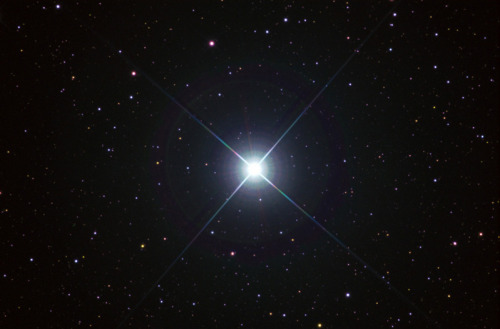Naos here, is an O-star. With an estimated age of about 4 million years, it's quite old for its type. In fact, it's one of the few O-stars in the galaxy which are visible to the naked eye. Being an extreme blue supergiant with 59 solar masses and a surface temperature of over 42000 kelvins, Naos is actually one of the brightest stars in the Milky Way. It's almost 800 000 times as bright as the Sun, although most of that light is ultraviolet. So much so that in the visible, it's only around 21000 times as bright visually.
Nonetheless, an O-star is a powerful object. If Naos was as close to us as Sirius, it would have an apparent magnitude of -9. That's bright enough to cast shadows on Earth's surface, and easily bright enough to read a book by at midnight! The full moon, for comparison, has a magnitude around -12. Even where Naos is, at around 1090 light years away, when it starts to die in somewhere between a few thousand to a million years, it'll become one of the brightest stars in the sky for a time. Eventually it will explode as a supernova much brighter than the full moon.

It's interesting what you discover sometimes when you're looking for standard stars to calibrate your data with...
No comments:
Post a Comment